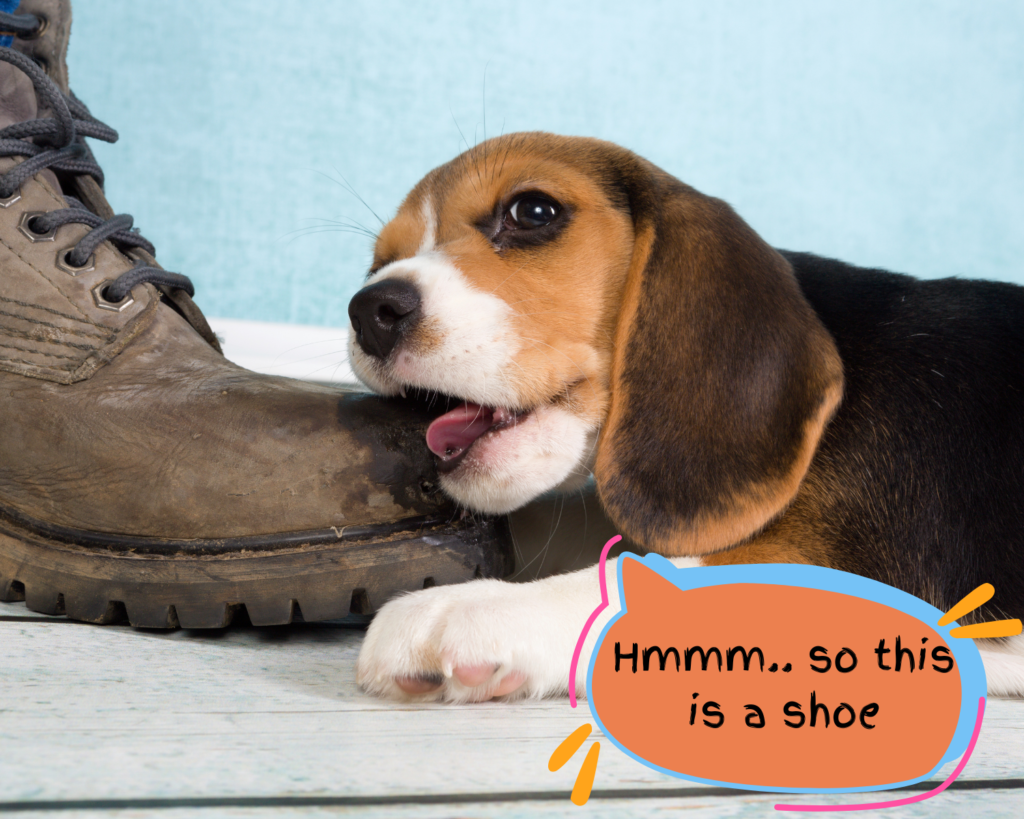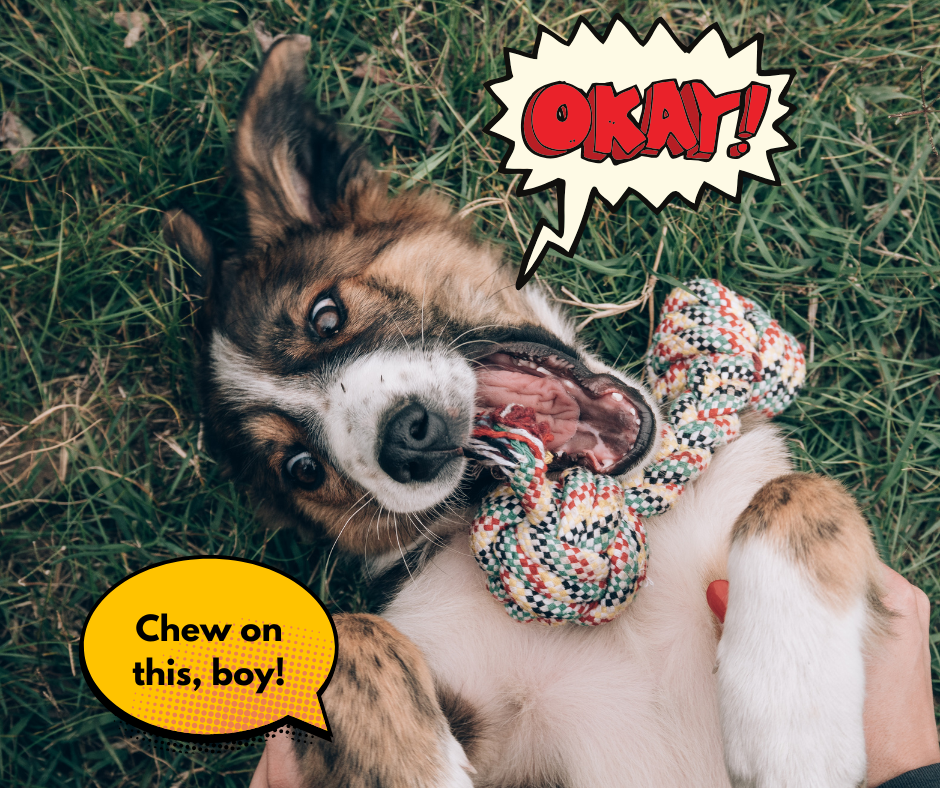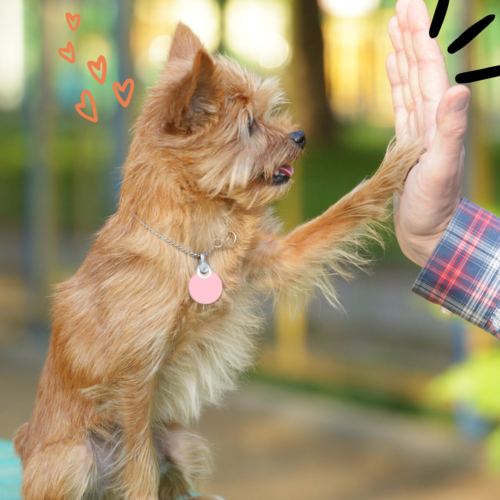Tired of your adorable fur baby turning your hands into a chew toy? Learn the ultimate hack to stop puppy biting and save your sanity – no judgment, just real talk!

Introduction
Let’s be real – that cute little ball of fluff you just brought home? Yeah, they’re basically a tiny shark with legs. 🐶 If you’re wondering how to survive the puppy bite phase, you’re not alone!
There are other new puppy parents deal with biting behavior. It’s not just you, and it definitely doesn’t mean you’re failing at this whole dog parent thing. In fact, understanding puppy biting is basically a rite of passage in the world of pet parenting.
Grab your oat milk latte, settle in, and let’s dive into everything you need to know about keeping those adorable (but razor-sharp) puppy teeth in check.
Why Your Puppy Thinks Your Hand is a Chew Toy
Puppies are natural explorers, and their primary tool for understanding the world is their mouth. This biological imperative is deeply rooted in their developmental process. When your puppy latches onto your hand, they’re not trying to be a tiny terrorist – they’re actually learning about their environment, texture, pressure, and social boundaries. It’s a crucial part of their cognitive and physical development.

Understanding the difference between playful nipping and actual aggression is key. Most puppy biting is simply a form of play and communication. Breeds have different propensities for mouthing behavior, with some naturally more mouthy than others. Teething plays a significant role in this behavior, as puppies experience discomfort and an irresistible urge to chew during this phase, much like human babies.
The way puppies interact with their littermates teaches them initial bite inhibition. When one puppy bites too hard, the other yelps and stops playing – a natural feedback mechanism that helps them learn the art of gentle interaction. As their human parent, you’re now responsible for continuing this education and setting clear boundaries.

Social Media-Worthy Bite Inhibition Techniques
Training your puppy doesn’t have to be a boring, serious affair. In fact, with the right approach, you can create content that’s both educational and entertaining. Positive reinforcement is the golden rule of modern dog training. Instead of punishing your puppy for biting, reward them generously when they exhibit gentle behavior.
Creating a viral-worthy training routine means being consistent, patient, and creative. Use treats, praise, and alternative chew toys to redirect your puppy’s biting instincts. Your training sessions can become engaging content that not only helps you document your puppy’s journey but also provides value to other dog parents navigating similar challenges.
Building a connection with your fur baby goes beyond just stopping the biting. It’s about establishing trust, communication, and mutual respect. Your approach should balance firmness with compassion, setting clear boundaries while maintaining a loving relationship. Think of it as a dance – sometimes you lead, sometimes you follow, but you’re always in sync.
Hack Your Puppy’s Behavior: Practical Stopping Strategies
Immediate bite prevention requires a multi-pronged approach. When your puppy starts to bite, use a sharp, high-pitched “ow!” to mimic the sound a littermate would make. This helps communicate that the bite was too hard. Immediately follow this by offering an appropriate chew toy, teaching them what they can and cannot bite.

Choosing the right chew toys is crucial. Look for toys that are size-appropriate, durable, and offer different textures. Rotate these toys to keep your puppy interested and provide variety. Consider freeze-able teething toys for puppies experiencing discomfort from teething.
Time-outs can be an effective training tool when used correctly. If your puppy becomes too bitey during play, calmly remove yourself or place them in a designated safe space for a short period. This teaches them that biting leads to the end of fun interactions. However, keep these time-outs brief – the goal is to communicate, not to punish.
Avoiding Puppy Parenting Fails
Many well-intentioned dog parents inadvertently encourage biting behavior. Rough play, using hands as toys, or failing to provide consistent training can all exacerbate the problem. Avoid waving your hands around your puppy’s face or using them as play objects.
Learning to read your puppy’s body language is crucial. Signs of overstimulation or impending biting can include increased excitement, stiff body posture, or repeated attempts to grab with their mouth. Recognizing these signals allows you to intervene before biting escalates.
It’s okay to seek professional help. Dog trainers and behaviorists can provide personalized strategies tailored to your specific puppy and living situation. There’s no shame in asking for support – it shows you’re committed to raising a well-adjusted dog.
Puppy Biting Through the Stages
Puppy biting isn’t a static behavior – it evolves as your dog grows. From 8 weeks to adolescence, you’ll see different manifestations of mouthing and biting. Early socialization is crucial during this period, exposing your puppy to various people, animals, and environments to help them learn appropriate interaction skills.
Different breeds have different tendencies when it comes to biting. High-energy breeds might require more structured training, while others might be naturally more gentle. Understanding your breed’s characteristics can help you tailor your approach.
Throughout this journey, don’t forget self-care. Puppy training can be overwhelming, and it’s important to have support systems, whether that’s fellow dog parents, professional trainers, or online communities.
Conclusion
You’ve got this, dog mom! Puppy biting is just a phase, and with the right approach, you’ll turn that little land shark into the goodest of good boys or girls. Remember, every bite is just a conversation – and you’re learning to speak puppy!
Pro tip: This journey is worth it. Your future cuddle buddy is waiting on the other side of this training!



Leave a Reply